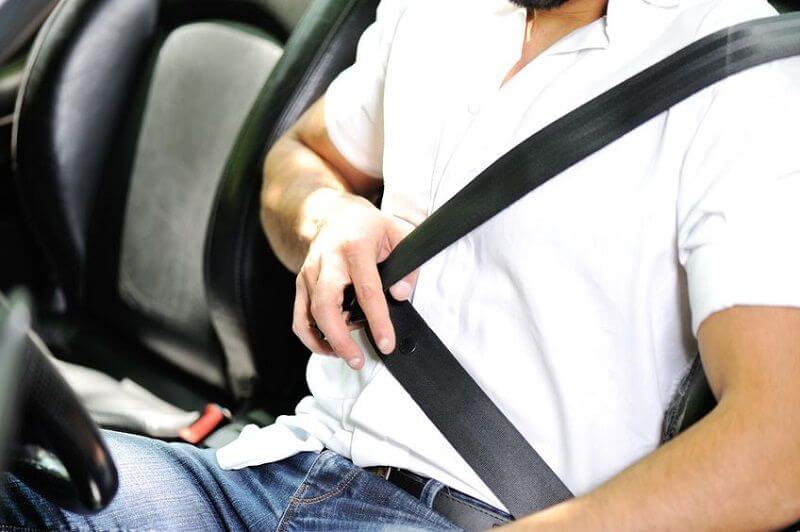
Pure Comparative Fault’s Definition and Examples
In a typical auto accident case, the at-fault party’s insurance company provides coverage for the other party’s damages, the amount of which is determined through negotiations or by a jury at the end of a trial. But what happens when the claimant or plaintiff is partially at fault? How is compensation distributed then?
Pure comparative fault, also referred to as pure comparative negligence, is a legal doctrine used in 13 states, including California. It allows claimants to collect for damages even if they are 99 percent at fault. However, their compensation amount is reduced by their degree of fault. This rule applies in all different types of auto accidents, including car accidents, truck accidents, motorcycle accidents, and pedestrian accidents.
The following example illustrates how pure comparative fault applies:
Jon was driving inebriated when he hit Alex, who was crossing the street as a pedestrian. Alex sustained multiple bone fractures. He demanded a total of $50,000 in compensation for his medical bills, out-of-pocket expenses, lost wages, and for his pain and suffering, claiming that Jon was 100 percent at fault because he was driving drunk at the time of the incident. The insurance company proposed a counteroffer of $40,000. They justified the 20 percent reduction by telling Alex that he had crossed in the middle of the street instead of using a crosswalk and thus was 20 percent at fault. They based this percentage estimation on past claims and lawsuits with similar circumstances.
Here’s another example:
Sally waited in the left-turn lane at an intersection until she received the signal to go. As she was making the left turn, Bryan, who was going in opposite direction, failed to stop at the intersection due to being distracted by his smartphone, and proceeded to collide into Sally’s vehicle. Fortunately, both were driving at relatively slow speeds. Bryan came away without a scratch, while Sally, who was not wearing a seatbelt at the time of the accident, suffered a minor concussion after her head struck the wheel. She sued Bryan for $10,000, but the jury gave her $9,000 after determining that wearing the seatbelt could have mitigated the damages caused by Bryan’s negligence.
If you have any questions about your auto accident injury case, please feel free to contact the experienced California car crash lawyers at Wilshire Law Firm for immediate assistance. We can investigate the circumstances surrounding your accident, analyze the evidence to establish the facts of your case, and develop a strong case for fair compensation. To learn more about your rights and legal options in a FREE consultation, call us today at (866) 344-0588.
What Is the Seat Belt Defense?
Do you often neglect to wear your seat belt? You may not think of the consequences most of the time, but if you are unfortunate enough to get in an accident, the seat belt is the one thing you will wish you had not forgotten to wear. Not only is the seat belt important for your personal safety, not wearing one can have legal consequences. You may be fined if you are caught, but that’s nothing compared to its negative impact on your personal injury claim.
What Is California’s Seat Belt Law?
In California, the Motor Vehicle Safety Act requires all occupants of a private passenger car, including the driver and passengers, to be secured by a safety belt. When it comes to limos and taxicabs, only front seat passengers are required to wear seat belts; however, seat belts must be provided for back seat passengers.
The state’s seat belt law states that if everyone in the car is 16 years of age or older, it is the responsibility of the driver to secure himself and tell all passengers to buckle up. If there are children under 16 years of age and their parents are not present, then again it is the responsibility of the driver to make sure that they are wearing their seat belt. However, if parents are present in the car, then it is their responsibility to ensure that their children are properly securely. Offenders may be fined from $20 to $100 if they are caught.
Seat Belt Defense in California
Let’s say that your car was rear-ended by another car at an intersection, causing your head to slam into the steering wheel. You suffered a head injury, neck injury and severe cuts and bruises. The occupants of the car that rear-ended you noticed that you were not wearing your seat belt at the time of the incident. In the ensuing legal battle, the defendant can argue that your head would not have slammed into the steering wheel if you had been wearing your seat belt. This is a clear illustration of the seat belt defense.
The seat belt defense is based on a 1998 ruling which states that once the defense presents evidence showing that the plaintiff was not wearing his seat belt at the time of the accident, the court must instruct the jury on the seat belt defense even if the defendant presents no evidence showing a relationship between the failure to wear a seat belt and the plaintiff’s injuries. The defendant does not bear the burden of proving a casual relationship between the plaintiff’s failure to wear a seat belt and his damages.
If you were not wearing your seat belt at the time of accident, then comparative negligence applies, which means you may be held partially at fault for the injuries caused to you by the other driver. After hearing the defense’s argument and the plaintiff’s admission, the jury determines what percentage of the injury was the latter’s fault. If the jury decides that you were 55% responsible for your injuries, then you will receive only 45% of your compensation, even if the accident was completely the other driver’s fault.
Can the Defense Use the Seat Belt Defense in California?
Not all states accept the seat belt defense. In fact, the majority of states have rejected it. But California is one of the 15 or so states that allows the defense to use it. Therefore, you must always wear a seat belt when you are travelling in a car in California, regardless of whether you are the driver or a passenger.
Using the seat belt defense, the defendant’s insurance company can reduce the amount of damages you can recover for failing to wear your seat belt during an accident. This is why you should retain a car accident attorney who is well versed in personal injury law and can negotiate a full and fair settlement on your behalf.
What Is a Diminished Value Claim in California?
Once you crash your car, its resale value automatically diminishes. Regardless of how well you have repaired it, how good it looks and how well it runs, it will still be worth less than it was before the accident. Potential buyers will not be willing the pay the same price for a car with an accident history. But there is a way you can recover the difference in value. It is called a diminished value claim.
The meaning of diminished value
The diminished value of a motor vehicle is the difference between its pre- and post-accident values. In insurance terms, it is the value that has not been restored even after repairs. There are three types of diminished values:
- Immediate diminished value: This is the difference between the resale value of a car before and immediately after it was damaged, i.e., before the vehicle is repaired. Most courts use this as a primary measure of damage. But in practice it is rarely used because most claims are settled out of court and also because most damaged cars are repaired before they are put on sale.
- Inherent diminished value: This is the difference in the resale value of a car before it was damaged and after it has been restored to its previous condition. The car looks the same as before and runs the same as before, but it has lost some of its value due to its accident history. This definition has the most common application.
- Repair-related diminished value: This is the additional decrease in the resale value of a damaged car resulting from less than optimal repair.
In conclusion, diminished value insurance allows car owners to recover the difference in the pre-accident resale value and the post-accident value of their car.
How to make a diminished value claim
For a successful claim, you will need an appraisal of the value of the car before the accident and after the repairs are done. The diminished value is based on how much less money you would get if you were to sell it. In addition to accident history, the loss in value can come from a less-than-perfect repair job, such as mismatched paint.
Your insurance company may not show enthusiasm in processing your claim. They may offer you a token amount calculated using an industry formula. In the worst case, they may argue that no such thing as a diminished value claim exists.
How insurance companies calculate diminished value
Insurance companies calculate the diminished value of a car using a formula called 17c – derived from its citation in a court case. Here is how it works:
- Look up the market value of the car in websites like NADA and Kelley Blue Book. You will need to enter the make, model, mileage and details about the damage.
- Multiply the market value by 0.10.
- Multiply for damage using the following options: 1 for severe structural damage, 0.75 for major damage to structure and panels, 0.50 for moderate damage to structure and panel, 0.25 for minor damage to structure and panel and 0 for no structural damage or replaced.
- Multiply for mileage using the following options: 1 for 0-19,999 miles, 0.80 for 20,000-39,999 miles, 0.60 for 40,000-59,999 miles, 0.40 for 60,000-79,999 miles, 0.20 for 80,000-99,999 miles and 0 for 100,000+.
The fact that the formula does not take into account mechanical damage, does not provide any explanation why the market value should be multiplied by 0.10 makes 17c, and does not explain why mileage is taken in account when it has already been factored in the marked price makes this formula very controversial.
How to calculate the diminished value of your car
It’s not necessary that you accept the amount offered by your insurance company. You should present them with your own value. Here’s how:
- Find the market value of the car in websites like NADA and Kelley Blue Book.
- Find similar cars with accident history and find the average post-accident value of three or four such cars.
- Subtract the market value of the car with an accident history from the market value of a similar car without an accident history. You will get the actual diminished value of your car.
In case you are facing stiff resistance from your car insurance company, it may be a good idea to retain a car accident lawyer to help pursue your diminished value claim, but only if your car is worth more than $10,000. Older and cheaper cars generally do not merit this type of claim.
Contact our California Car Accident Lawyer for Help Now
If you’ve been injured in a car accident, through no fault of your own, don’t wait! Call the car accident attorneys at Wilshire Law Firm right away. The following are some of the most common reasons for car accidents:












